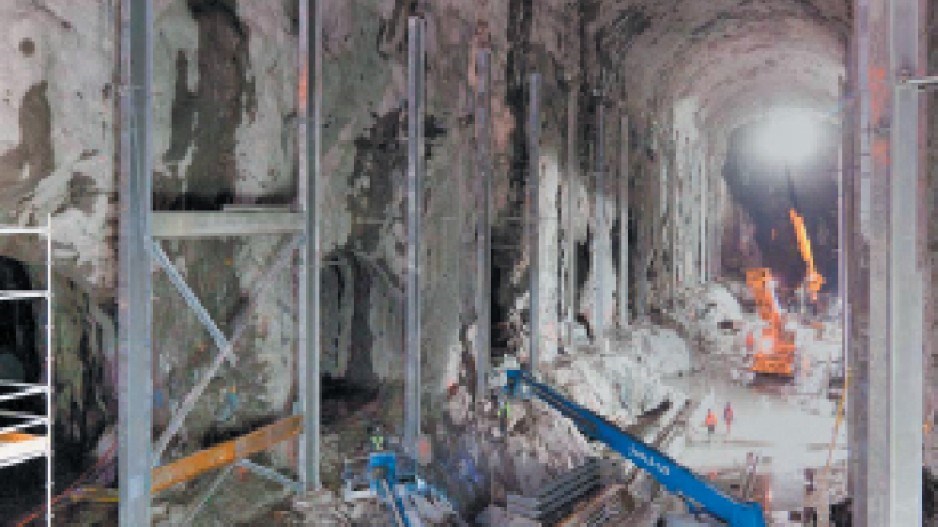It is a six-and-a-half-hour drive south along Highway 37 from the Red Chris mine site to the nearest Canadian city – Terrace.
Even so, Terrace has witnessed a boom in construction work and spinoff business, thanks to the $500 million Red Chris mine project and two related mega-projects – the $740 million Northwest Transmission Line (NTL) and $700 million Forrest Kerr run-of-river power project being built by AltaGas (TSX:ALA).
"Terrace and Smithers are seeing quite a large benefit, just from the contractors working up in the area," said Evan van Dyk, economic development officer for the Terrace Economic Development Authority.
"Several new businesses moved to town and opened up offices, the major one being Valard (a division of Quanta Services Inc. ([NYSE:PWR]). We've seen restaurants full and requiring a reservation, which we never had to do in the past."
Eighty kilometres north of the mine site, the tiny town of Dease Lake has likewise seen a surge of employment.
"Anybody that's available for work works there," said Robert Wank, owner of Dease Lake Super A Foods grocery story, which is enjoying increased sales, thanks to contractors buying supplies at his store.
"I would say that it helps us 20% – probably more than that because, at the end of the day, my sales go up because people have money," Wank said.
The Imperial Metals (TSX:III) Red Chris copper-gold mine is scheduled to go into production in the fall of 2014.
It will be among the first of B.C.'s new generation of greenfield mineral mines to go into operation, several of which are located in what has been dubbed the "golden triangle" between Stewart and Dease Lake.
Red Chris's rich deposit of copper and gold was discovered in the 1950s. But without power, it wasn't viable. It was only with the approval of the NTL that it became feasible. Indeed, the NTL and Red Chris mine are somewhat symbiotic – without one, the other would not likely be built.
With estimated reserves of 2.08 billion pounds of copper and 1.32 million ounces of gold, the mine will have an annual average production of 30,000 tonnes of ore over three decades.
"It's very significant," said Mining Association of BC CEO Karina Brino. "Not only is it an important deposit, in terms of its potential and mine life, but also in terms of the economic activity it's going to create."
"It's the 12th-largest undeveloped copper project in the world," said Steve Robertson, Imperial's vice-president of corporate affairs.
The mine will start as two open pits that will eventually merge into a single pit 1.8 kilometres long, one kilometre wide and 400 metres deep. With even richer deposits farther down, the mine may eventually go underground.
"In the first five years, we'll actually be producing some higher-grade material," Robertson said. "We'll actually come close to 90 million pounds of copper per year and over 52,000 ounces of gold. That average will decrease as we get out into some of the lower grade areas."
At peak construction, the mine project will employ 500 workers on both the mine site itself and the Iskut extension – a 93-kilometre transmission line that Imperial is building to extend the NTL from Bob Quinn Lake to Tatogga, plus a distribution line to the mine site.
Once the mine is in operation, it will employ 300 miners – who will live in an on-site work camp – a significant portion of whom will come from the small Tahtlan First Nation village of Iskut.
"The workforce will be almost exclusively British Columbian," Robertson said. "I don't anticipate we're going to have much in the way of out-of-province workers."
Iskut will not just benefit from jobs – it will also benefit from clean, reliable power. The village currently generates power through diesel generators, but will be connected to the BC Hydro grid when the NTL is complete.
The Town of Stewart will also benefit from the mine, as the concentrate from the mine will be trucked there and shipped to smelters via the Stewart Bulk Terminals. •




